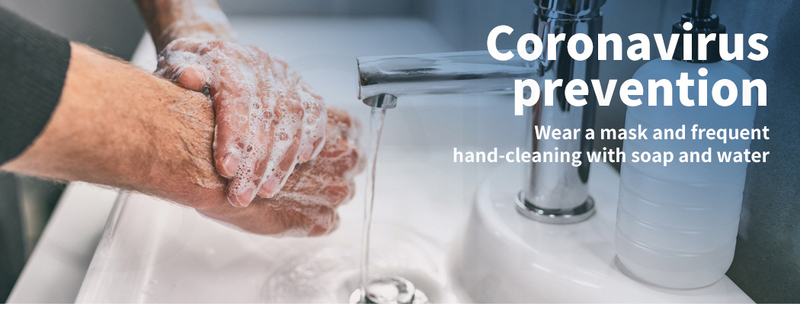How To Choose an N95 Respirator Mask For Coronavirus Prevention? All You Need to Know Before Buying Face Masks.
1. What’s an N95 mask?
An N95 respirator is a respiratory protective face mask, designed to help reduce the user’s exposure to airborne particles including very small particles (0.3 microns) and large droplets. N95 respirator face mask literally has a filtration efficiency of at least 95% against non-oily particles.
2. Differences between N95 mask and surgical mask?
Generally, the N95mask also includes an N95 surgical mask. So, here we will just compare a standard N95 particulate mask with a disposable surgical mask. Surgical masks are designed to be worn by healthcare professionals during surgery and nursing, to help prevent contamination of the surgical field or the patient by capturing liquid droplets that are expelled by the user.
An N95 particulate mask blocks at least 95 percent of very small (0.3 microns) test particles, and while a disposable surgical mask is fluid-resistant and protects the user against large particles (5 microns), droplets, sprays or splatter.
Different from a loose-fitting, disposable surgical mask, an N5 mask is tight-fitting to achieve a very close facial fit, which guarantees a minimal leakage around the edges of the mask when the user inhales. If properly fitted, the filtration capabilities of N95 respirators exceed those of disposable surgical face masks.
Speaking of the N95 mask price and disposable surgical mask price, the N95 respirator mask is pricier than a surgical mask. In contrast, the N95 mask is reusable but the common surgical mask is disposable. Strictly speaking, N95 respirator masks should be worn for a maximum of eight hours while the disposable surgical mask is recommended to be replaced every four hours.
However, during the novel coronavirus outbreak, face masks are in short supply and everyone discards one or two face masks every day. A surgical mask could be used for a whole day in a good condition of no damage, no moisture, and no deformation. According to some researches, the N95 respirator mask used for two days still maintains a filtration efficiency of at least 95%, while the filtration efficiency of an N95 respirator used for three days reduced to 94.7%. So, if an N95 respirator is in good maintenance, you can wear it for at least 2 days, a week, maybe even a month.
3. What are the differences between N95, KN95, FFP2?
N95/KN95/FFP2 respirators are recommended by World Health Organization for reducing the spread of Coronavirus.
They are not exactly the same, but equivalent standard. (N95 is a USA standard, KN95 is a Chinese standard, FFP2 is a European standard).
Filtering facepiece respirators (FFR), which are sometimes called disposable respirators, are subject to various regulatory standards around the world. These standards specify certain required physical properties and performance characteristics in order for respirators to claim compliance with the particular standard. During pandemic or emergency situations, health authorities often reference these standards when making respirator recommendations, stating, for example, that certain populations should use an “N95, KN95, FFP2, or equivalent” respirator.
* N95 (United States NIOSH-42CFR84 standard)
* KN95 (China GB2626-2006 standard)
* FFP2 (Europe EN 149-2001 standard)
Based on relevant professional organizations comparison and according to the performance requirements specified in the relevant standards, confirmed in the qualification test, it can be proven that the functions of the respirators meeting the relevant standards are very similar.
Based on this comparison, it is reasonable to consider Chinese KN95, European FFP2 FFRs as equivalent to US NIOSH N95 respirators, for filtering non-oil-based particles such as those resulting from wildfires, PM 2.5 air pollution, volcanic eruptions, or bioaerosols (e.g. viruses).4. How often does the face mask change?
Medical experts recommend that masks should be replaced in a timely manner after being used for 4 hours, otherwise virus will gather on the surface of the mask and eventually contaminate the mask.
5. How to most effectively reduce the chance of being infected?
We need to start with each of us: it's better to stay at home; if you have to go out, please consider to wear masks, goggles, gloves, foot covers, and wash hands frequently.
